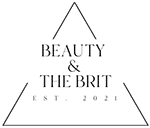
Today I wanted to share with you a little insight into what I eat, in case you were wondering, and to answer some questions about all the “it” diets out there today. Do you adhere to a particular diet? Are you paleo? Grain-free? Gluten-free? Conventional? Clean? Pegan???? The nutritional landscape is daunting and confusing to us all. There is so much information, some of it is conflicting, it’s always changing, and you really could have a full time job reading up on all this stuff! But who has time for that? I hope to clear up some of the confusion today and most of all help you narrow down the right diet for YOU! At the end of the day you just need to be in tune with your body and eat what foods make you feel the best. No I don’t mean what makes you feel good as it’s going down (pizza anyone?), I’m talking about energy and how you feel in your body. Not everyone is going to have the same body type, so focus more on how you FEEL. From there you can love yourself, your individual body, and live life to the fullest!
Over the past few years I’ve read up on many of the latest and greatest diets: gluten-free, vegan, paleo, to name a few, but there was never a diet I found that truly mirrored the way I eat (usually- I’m not perfect ;)) which is a diet based on veggies and fruits, healthy fats, and lean meats and eggs.
Here is what I focus on eating in order of priority (think a reverse pyramid):
1. Fresh veggies, especially dark green leafy ones like kale, spinach and arugula.
2. Meat such as grass-fed beef, pasture-raised chicken and eggs, and wild salmon.
3. Healthy fats like virgin cold-pressed coconut oil, avocados, and nuts like cashews and almonds. You can read about the wondrous benefits of coconut oil HERE.
4. Fruits, preferably ones lower in sugar and high in antioxidants like blueberries and blackberries. See the Benefits of Blues HERE.
5. Healthy carbs such as sweet potatoes and yuca (see my Ultimate Nachos for a great yuca recipe).
6. I do love sweets, as you can tell my my DESSERT section of my blog (It’s my largest section by far!), so I do eat healthier sweets that are lower in sugar and grain-free such as my Peanut Butter Cup Brownies (I make them with almond butter) or Chocolate Chip Cookies. I also do eat some legumes (black beans and lentils) and grass-fed dairy like Kerrygold butter and goat and farmers cheese. Occasionally I even eat some grains…. Gasp!! Yes, I eat some rice (I opt for white read why HERE) as I love my sushi! I also consume some quinoa without issue, but not on a daily basis.
This is how our society currently thinks of healthy eating: fruits and veggies, whole grains including whole wheat, lean meat and low-fat dairy. It’s great that the focus is on lots of fresh produce, but for me wheat is a no-go and I will share with you why later. Lean meat is fine, but just any conventional meat will do? I disagree there. And conventional low-fat dairy is not great for the same reasons as conventional beef. The nutritional makeup of the animal’s meat and milk is different because they have been fed grain, not pasture grass (which is what they are suppose to eat), and they are given antibiotics and hormones to increase production. You can read about the benefits of grass-fed dairy HERE. Conventional healthy eating also still clings tightly to low-fat methodology, but I am here to say (healthy)fats in your diet will not make you fat! Do not shy away from healthy fats, increase them in your diet. This included extra virgin olive oil, virgin cold pressed coconut oil, avocado, nuts, seeds. Since I have increased these fats in my diet I have seen an increase in energy and a DECREASE in body fat.
Gluten-free is a great start, as it eliminates wheat and other gluten. I personally feel better when I stay away from gluten. I had struggled with distention in my tummy for years and I no longer suffer that uncomfortable ailment with the elimination of gluten. I do “cheat” once in a while say if I am at someone’s home for dinner, or on a very special occasion, because I don’t have a particular sensitivity, but 99% of the time I don’t consume it. The downside to gluten-free is that you can still consume large amounts of corn, soy, and processed “gluten-free” foods that aren’t necessarily any better for you.
Paleo is another lifestyle diet that is not only gluten-free, but also takes the limitations further to include no dairy, no legumes, and very limited sugars. Overall it’s a very heathy diet that works well for me. The majority of my recipes are paleo, or contain a paleo option in the recipe. The downside to paleo is that it can be heavy on the meats, and often it doesn’t particularly stress the importance of GRASS-FED meat, eggs, and bone broth. You can read more about why grass-fed meats are better for you HERE. I personally do include a few things in my diet that are not considered paleo like occasional beans, rice and quinoa.
Vegan is just too challenging (for me) to get enough protein, as it eliminates all animal meats, eggs and dairy products. It feels too limiting to eat vegan entirely, but I do eat many things considered vegan and many of my recipes fall into the vegan category- I have a section on my recipes page devoted to Vegan Recipes. A vegan diet also includes all grains- wheat included.
And what the heck is PEGAN? Pegan is essentially part vegan (high on the veggies) and part paleo (healthy meat, no grain). Dr. Mark Hyman, a NY Times bestselling author of many top health and wellness books, defined the “new” Pegan diet as follows:
“1. Focus on the glycemic load of your diet. This can be done on a vegan or paleo diet, but harder on a vegan diet. Focus on more protein and fats. Nuts (not peanuts), seeds (flax, chia, hemp, sesame, pumpkin), coconut, avocados, sardines, olive oil.
2. Eat the right fats. Stay away from most vegetable oils such as canola, sunflower, corn, and especially soybean oil which now comprises about 10 percent of our calories. Focus instead on omega 3 fats, nuts, coconut, avocados and yes, even saturated fat from grass fed or sustainably raised animals.
3. Eat mostly plants – lots of low glycemic vegetables and fruits. This should be 75 percent of your diet and your plate. I usually make 2 to 3 vegetable dishes per meal.
4. Focus on nuts and seeds. They are full of protein, minerals, and good fats and they lower the risk of heart disease and diabetes.
Avoid dairy – it is for growing calves into cows, not for humans. Try goat or sheep products and only as a treat. And always organic.
5. Avoid gluten – Most is from Franken Wheat – so look for heirloom wheat (Einkorn); if you are not gluten sensitive, then consider it an occasional treat.
6. Eat gluten-free whole grains sparingly– they still raise blood sugar and can trigger autoimmunity.
7. Eat beans sparingly – lentils are best. Stay away from big starchy beans.
8. Eat meat or animal products as a condiment, not a main course. Read The Third Plate by Dan Barber to understand how shifts in our eating habits could save the environment and ourselves. Vegetables should take center stage and meat should be a side dish.
9. Think of sugar as an occasional treat – in all its various forms (i.e., use occasionally and sparingly).”
So for me I guess I’m closest to a PEE-GAN. (Not PA-GAN as far as pronunciation goes…;)) It works best for me and my body. I try to eat this way MOST of the time. I must admit I do not follow these guidelines 100% of the time. I aim to, but currently I do eat some things on the no-no list occasionally. That’s ok for me because I just get back on the pegan train, and I know if I’m eating this way most of the time I’m doing good things for my mind and body. This may be a great take home message for some of you out there that eat a conventional diet, and haven’t tried paleo, grain-free or pegan because it seems so difficult to follow… such a strict regime. If you aren’t suffering from any particular illnesses or food sensitivity, just try to incorporate as many of these guidelines as you can, and aim to increase them over time. Some are better than none, and this open and flexible outlook will set you up for success as opposed to the all or nothing approach!
If you are ready to commit to better health through nutrition the best advise I can give you is start simple- lots of fresh veggies, lower sugar fruits like berries, nuts, pasture-raised meats and eggs. Organic is best because it is not exposed to chemical pesticides. Give it 30 days and see how you feel. I guarantee you will feel better! From there you can add in some simple healthy desserts, grass-fed dairy, or even maybe some beans or rice if you wish. Add them one at a time to see how you do on them. Listen to your body and make adjustments as you go to perfect your personal version for optimal health!
I also recommend a healthy homemade grain-free diet for dogs as well. They do have higher protein requirements than we do so they require more meat, but they do thrive on foods made from meat and veggies, sans wheat and other grains. My dog Cricket had a terrible injury as a puppy and she has struggled with pain and arthritis in her injured leg. She feels and looks her best (I can tell because she’s always getting into mischief when she’s feeling good) when she is eating a homemade grain-free diet. Another reason I cook for Cricket is because the dog food industry is not heavily regulated and the resulting dog food often contains things we wouldn’t want our furry loved one eating. You can see my dog food and treat recipes HERE.
Any questions? Comments? I’d love to hear from you!
Best,
Kelley and Cricket



































